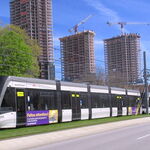It's not just for a for-profit company though, is it?
For better or for worse, Metrolinx tracks it's delay/on-time figures. And it attributes any delays to the appropriate division that it feel should. And remember that 15 minute service guarantee? Those delays get attributed in part to figure out whether Metrolinx is at fault, and thus has to pay out for the delays.
https://www.gotransit.com/en/service-guarantee
And it's more than just that - in quite a few cases people's jobs are on the line. Morale is not terrific in many parts of the organization, and anything that anyone can do to keep out of the proverbial firing line they will. And if that means that the dispatchers following the grid to a "T", to the detriment of VIA, that's exactly what they will do.
I doubt that using the operating model common in other countries - where the public rail owner gives equal access to all passenger rail operators - would decimate morale, cost people their jobs and end the ability to run reliable service. Somehow every EU country managed to implement impartial rail dispatching without causing the sky to fall.
In the European Union, it is in fact legally required that
public rail owners give equitable access to passenger rail operators. In the Netherlands, for example, the national government owns both ProRail (rail infra owner) and NS (train operating company) but they are not allowed to give NS trains absolute priority over passenger trains from other companies such as Arriva or Eurostar. ProRail must act as an impartial dispatcher and there is an EU standard methodology for evaluating dispatching.
NS can't get absolute priority over every other train, but they still have on-time performance just as good as GO Transit and they have
a 30-minute service guarantee for delays not caused by a different company (so it covers mecanical issues, passenger incidents, etc).
In Germany, the rail infrastructure owner is even part of the same company as two of the passenger TOCs (DB Regio and DB Fernverkehr), but they too are supposed to provide a similar level of priority to all passenger rail operators.
What I am proposing is to introduce the same expectations in Ontario:
Don't get me wrong, I am not in any way excusing or condoning the practice. As you stated in your earlier post it's pretty abhorrent to be on a VIA train that has sailed past a GO train, only to have to wait for it to service a stop or two and then come past. I've experienced it several times. But unfortunately it's not likely to change in the near term, not without a hell of a lot more noise than is happening now.
Currently little to no noise is being made about this, so I am trying to change that. The general public is currently blisfully unaware of how much Metrolinx undermines Via Rail's operations, so we need to bring this issue to the public's attention. Like you said, change will only happen if there is a lot of public pressure to do so. The public is well aware of the way that CN impacts Via operations, so it should be possible to get a similar level of awareness about how Metrolinx's incentives are currently set up. This series of posts is merely my first step to make noise. I figure I want to share my thoughts with knowledgeable people such as yourself to get a second opinion before I start making noise targeted at the general public.




